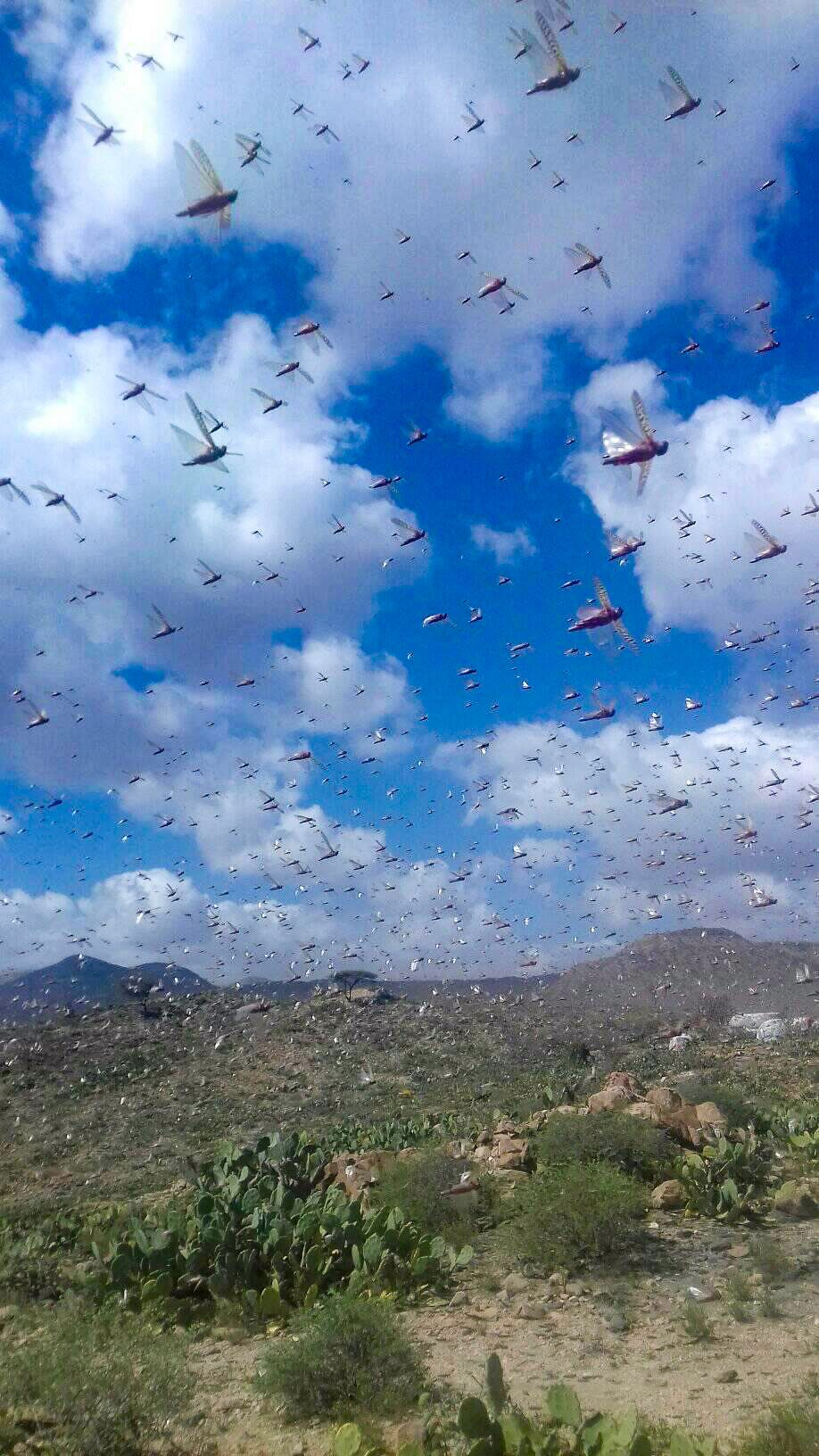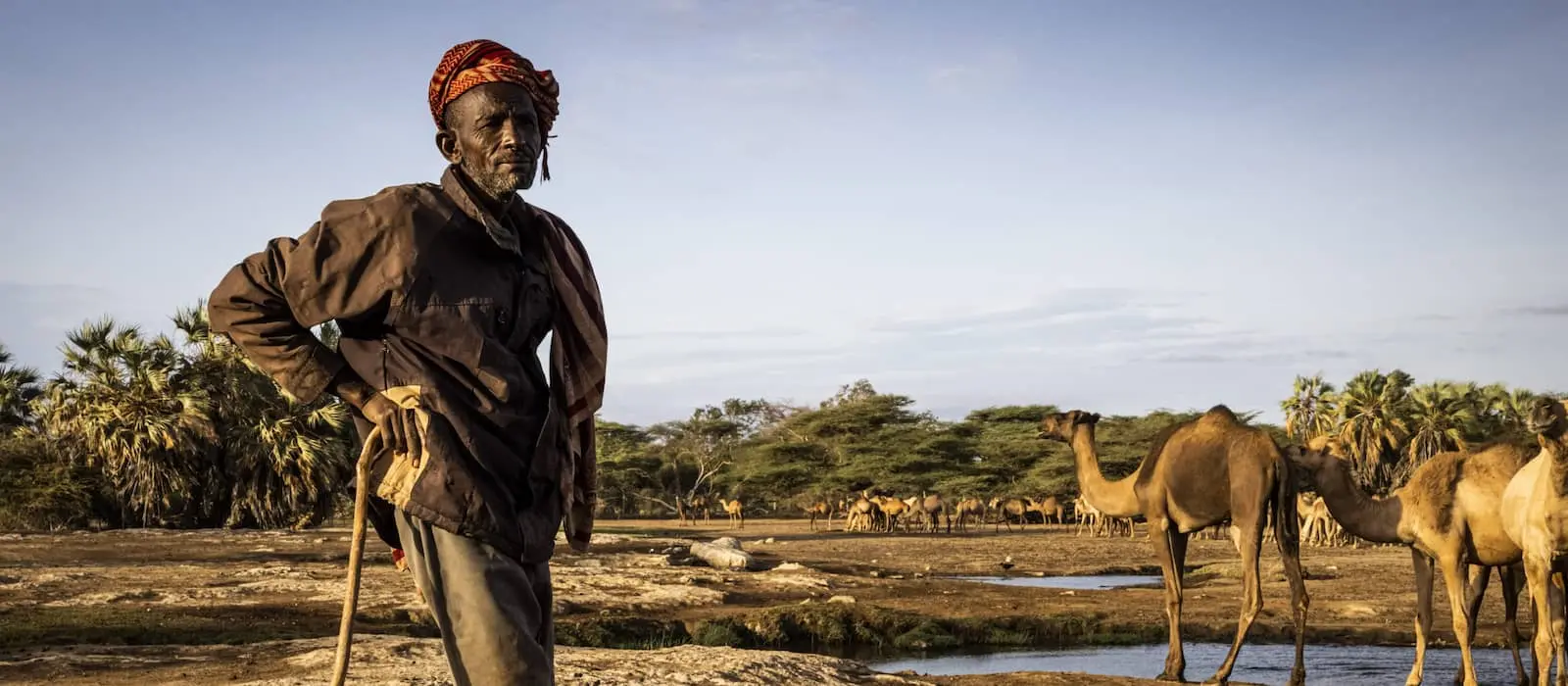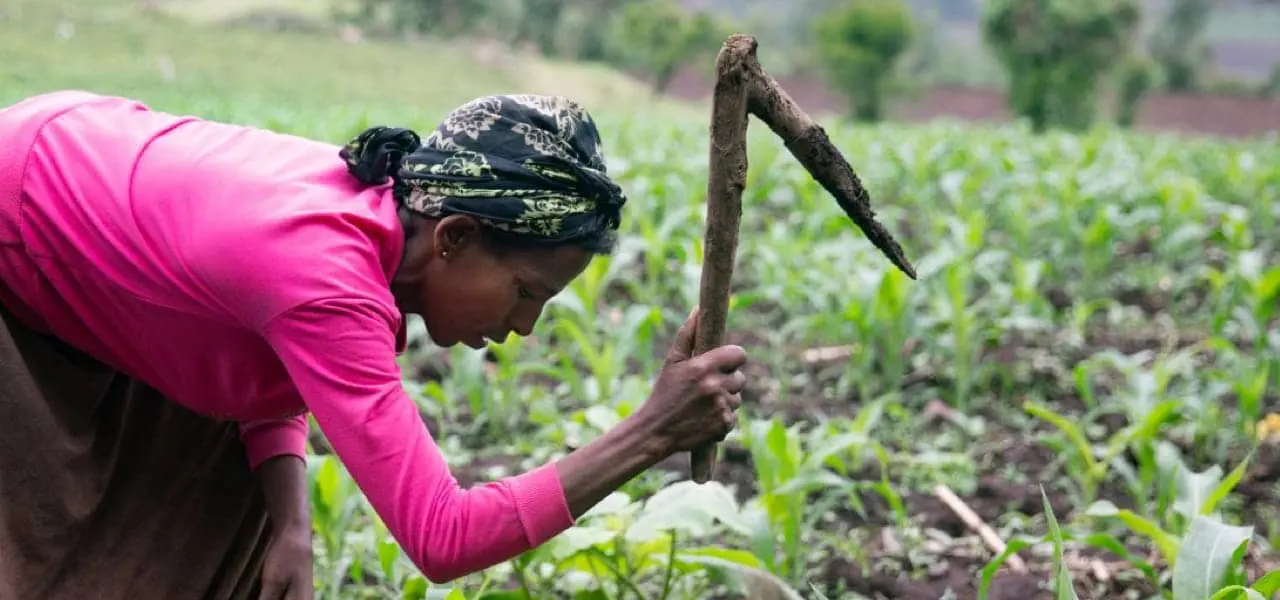Huge swarms of desert locusts are making their way across East Africa, causing massive destruction to crops and livelihoods. And experts warn that it could get much worse.
The Desert Locust is considered the most destructive migratory pest in the world, with a "small" swarm (less than a mile in diameter) consuming as much food in one day as 35,000 people. Multiple swarms have been appearing across the Horn of Africa over recent weeks, some as big as 25 miles in diameter. This spells disaster for those who live in their path.
Food supplies for an estimated 13 million people are at risk, and UN agencies warn that an additional 20 million people could be threatened if the crisis drags on. A similar locust invasion in the 1950s resulted in famine in Kenya.
“Millions of locusts are eating all vegetation in their path including food crops that are absolutely crucial for survival here," according to Concern Kenya Country Director, Amina Abdulla. “It only takes 30 seconds for a swarm to eat an entire field.”

The UN's Food and Agriculture Organization (FAO), says favorable climatic conditions since the beginning of the year have allowed widespread breeding of the pest in East Africa, Southwest Asia and the area around the Red Sea.
Kenya, Ethiopia, and Somalia are most vulnerable, as millions of families have been struggling to cope with an ongoing food crisis, caused by prolonged drought. Recent rains had given hope of relief — hope that is now being dashed by the massive locust invasion.

Kenyan farmers and herders have dealt with insect swarms before, but this is the worst infestation in 70 years. “This is extremely worrying and has major implications for Kenya in terms of food security,” Amina Abdullah warns.
Similar locust swarms in Ethiopia are the worst the country has seen in 25 years, with an estimated 235,000 hectares of crop, pasture, and forest invaded by the infestation so far.
Meanwhile in Somalia, rural communities already struggling to cope following unusually heavy rains and flash floods in the second half of 2019 are especially vulnerable now to the effect of the massive locust swarms.
"Locust swarms have started laying eggs"

According to the FAO, aerial control is the only effective means to reduce the locust numbers, and spraying operations have been scaled up in response. But the problem could get much worse. "Locust swarms have started laying eggs and another generation of breeding will increase locust numbers," says Keith Cressman, a senior locust forecasting officer at the FAO. "Urgent efforts must be made to stop them from increasing to protect the livelihoods of farmers and livestock holders."
There are worrying times ahead for affected families, as experts warn of a 500 times increase in locust numbers, if the crisis is left unchecked.
Concern works with tens of thousands of farming and pastoralist families across the region and our teams are working to support them through the crisis. "We are conducting cash transfers in order to help affected communities survive," says Kirk Prichard, Concern US Vice President of Programs. "These cash transfers allow families to buy food, seeds, agricultural tools and other basic items."
The locust infestation is expected to drive up the price of food in affected countries and the wider region, and will likely have knock-on effects on those living in urban slums, potentially tipping them into a crisis situation.
Reports are now coming in that swarms of locusts have now crossed into South Sudan, a country already badly affected by hunger.



